

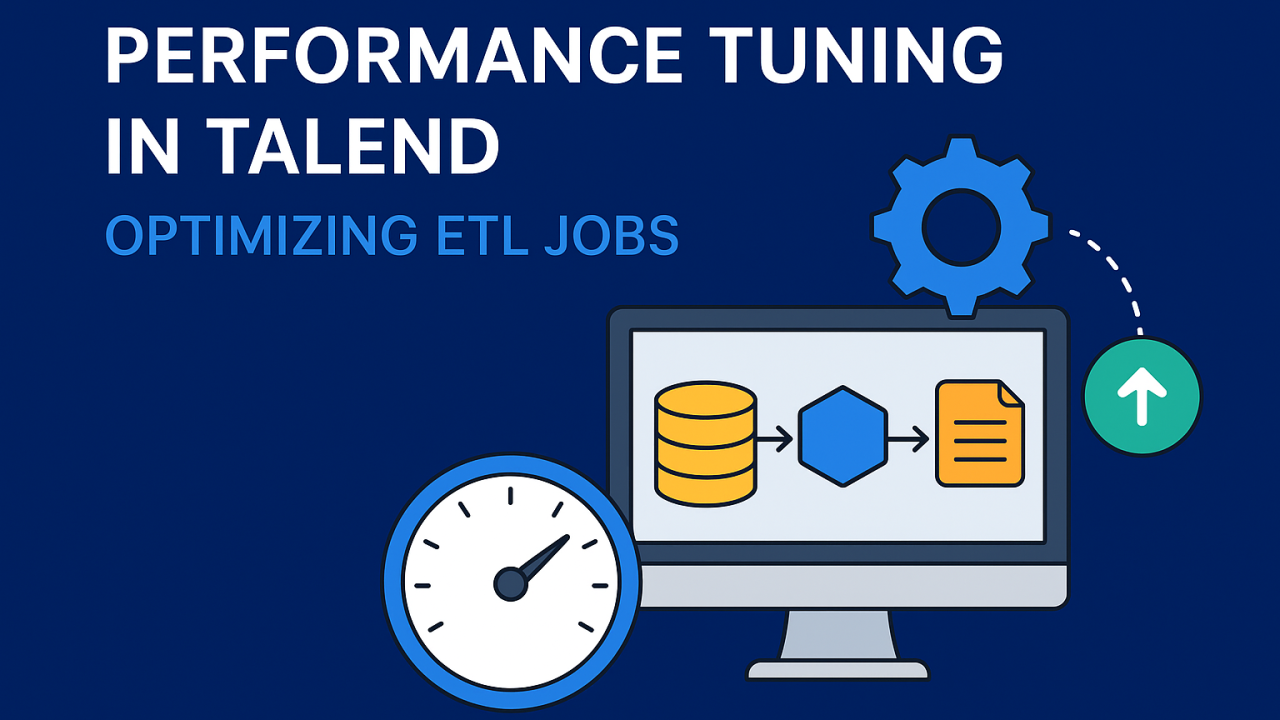
When working with Talend ETL jobs, performance can often become a challenge especially when dealing with large datasets. A job that runs smoothly with 10,000 rows may struggle when the input grows to millions or even billions. This is where performance tuning comes in. Performance tuning means improving the speed, efficiency, and resource usage of your Talend jobs by identifying slow parts (bottlenecks) and optimizing them.
In simple words: making your Talend jobs run faster and handle more data without consuming unnecessary system resources.
Bottlenecks are the parts of your ETL job that slow everything down. Some common ones are:
Here are some proven techniques to optimize your ETL jobs:


Let's take a simple job for understanding.
In Talend Studio, use the employee table as input and load it into a database.
It takes nearly 5 seconds to load the data

Filter the rows using where condition:
To filter the data, in the tDBInput component, write:
Now execute the job in talend;

After applying the WHERE conditions, execution time reduces to 1.34 seconds, showing how much the performance has improved.
Here rows are filtered based on the query, the result is:

In Talend workspace, if you have multiple sub-jobs;
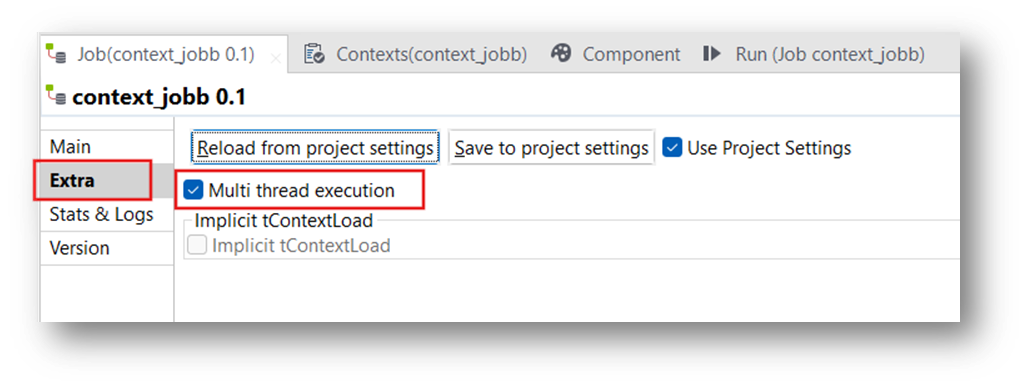
Multi thread execution useful for jobs that can process data streams in parallel.
Now run the job,
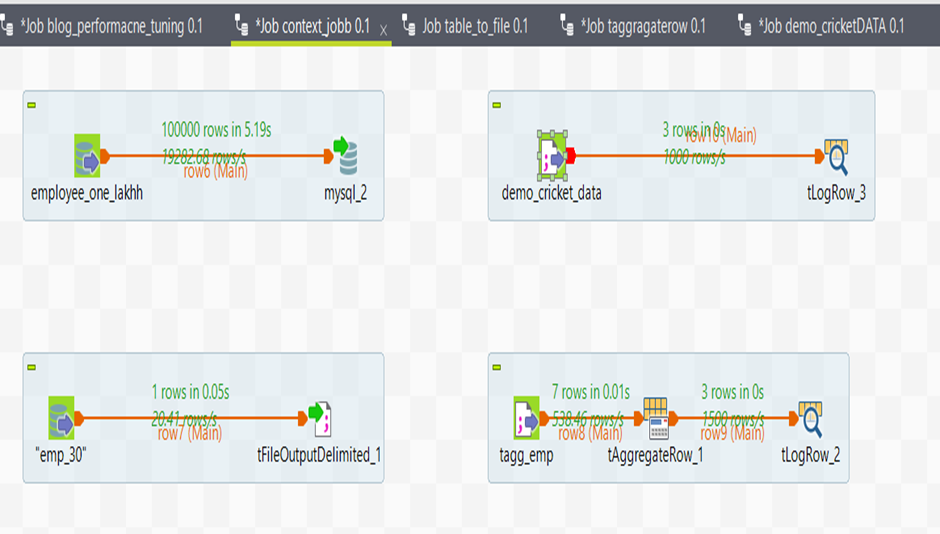
Here, all jobs are executed in parallel.

Example in Talend:
If you try to join in tMap without “Store on disk”, Talend loads all 2M customer rows in memory → may crash.With “Store on disk”, Talend writes those 2M rows to a temp file on disk, and reads only the needed matches → job runs safely.
Open Your Job
In Talend Studio, open the job where you want to increase memory.
Open the Advanced Settings
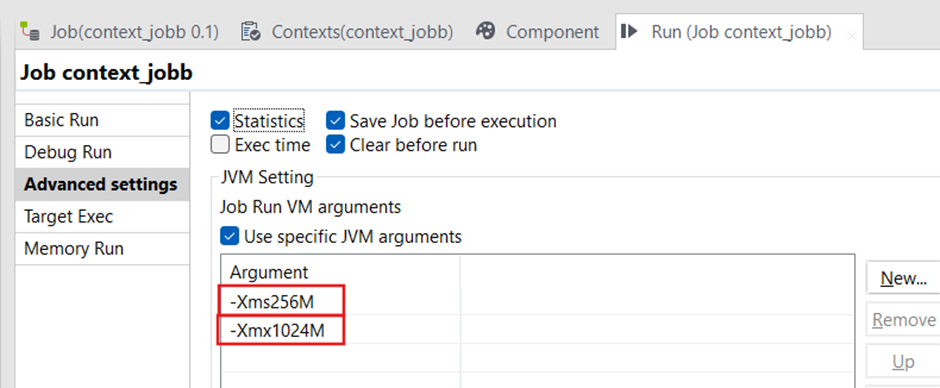
Set JVM Arguments (Heap Size)
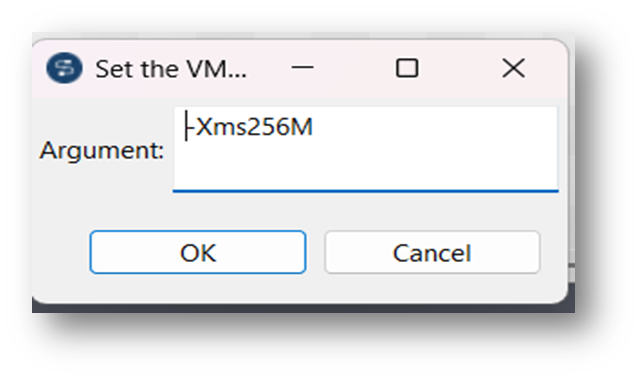
Example values you can try depending on your system RAM:
Performance tuning in Talend is not about redesigning everything - it’s about making smart adjustments to eliminate bottlenecks. By pushing work to the database, handling lookups efficiently, using bulk operations, and managing resources wisely, you can make your Talend jobs faster, scalable, and production-ready.